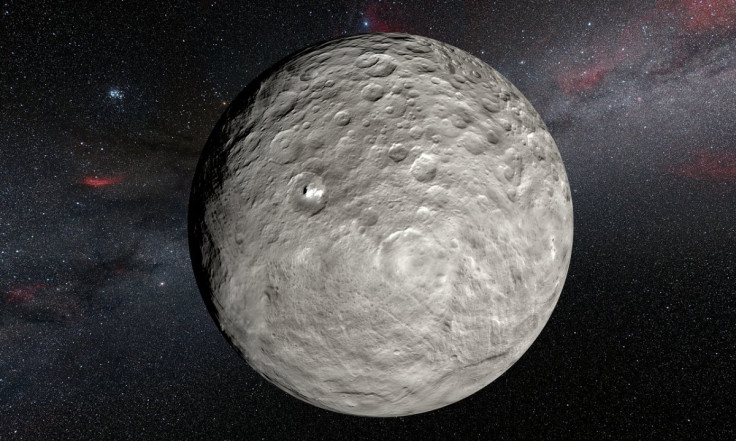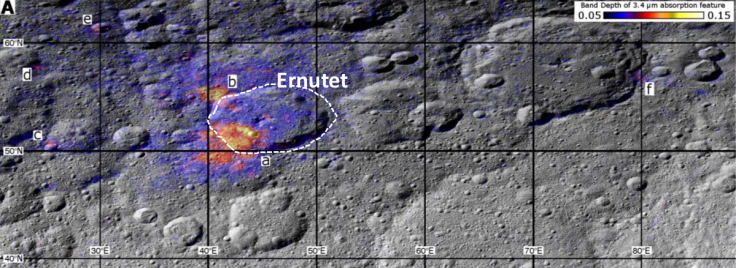Nasa's Dawn finds key ingredients for alien life on dwarf planet Ceres
Organic compounds detected from interior of dwarf planet with spacecraft's visible and infrared mapping spectrometer.
The ingredients right for alien life to exist have been discovered on the dwarf planet Ceres. With Nasa's Dawn spacecraft, scientists have identified organic compounds coming from within the planet's interior.
Ceres is thought to have formed 4.5 billion years ago, when our solar system was first created. New data from Dawn's visible and infrared mapping spectrometer has revealed unusually high concentrations of organic matter near the 50km-wide Ernutet crater in the planet's northern hemisphere.
In a study published in the journal Science, researchers analysed the distribution and characteristics of the organics to find out where they came from – being close to a crater could indicate they were brought there by an asteroid or comet. However, this is not the case.
The material identified – aliphatic organic compounds – are carbon-based building blocks that could be involved in the creation of life. While scientists were not able to work out exactly what the compounds are, they appear to be similar to tar-like minerals such as asphaltite and kerite.

This means they could not have been transported to Ceres, as an asteroid or comet impact would create heat that would have destroyed them. The surface distribution also does not fit with an impact scenario.
Simone Marchi, one of the study authors, explained: "The overall region is heavily cratered and appears to be ancient; however, the rims of Ernutet crater appear to be relatively fresh. The organic-rich areas include carbonate and ammoniated species, which are clearly Ceres' endogenous material, making it unlikely that the organics arrived via an external impactor.
"This discovery of a locally high concentration of organics is intriguing, with broad implications for the astrobiology community."
Ceres displays signs of hydrothermal activity. Scientists think an internal process may be creating these organic-rich areas. The team will now study the planet to work out how the material is being transported from the interior to the surface.

"Ceres has evidence of ammonia-bearing hydrated minerals, water ice, carbonates, salts, and now organic materials. With this new finding Dawn has shown that Ceres contains key ingredients for life," Marchi said.
In a related Science article, the European Space Agency's Michael Küppers discusses the possibility of life emerging on Ceres: "Because Ceres is a dwarf planet that may still preserve internal heat from its formation period and may even contain a subsurface ocean, this opens the possibility that primitive life could have developed on Ceres itself. It joins Mars and several satellites of the giant planets in the list of locations in the solar system that may harbour life.
"Future missions to asteroids, comets, and the outer solar system may provide answers to the fundamental questions concerning the origin of water and organic material on Earth and the possible formation of prebiotic material and primitive life in the outer solar system."
© Copyright IBTimes 2025. All rights reserved.























